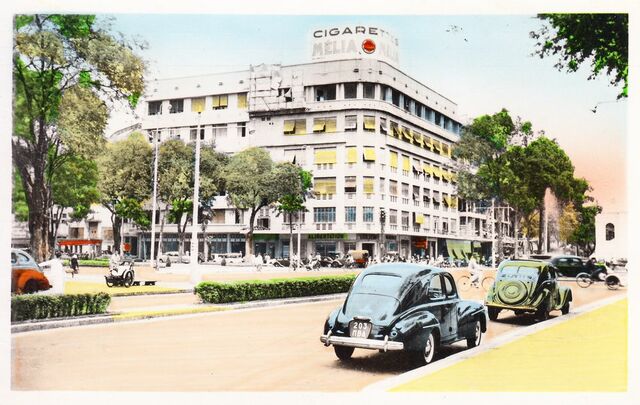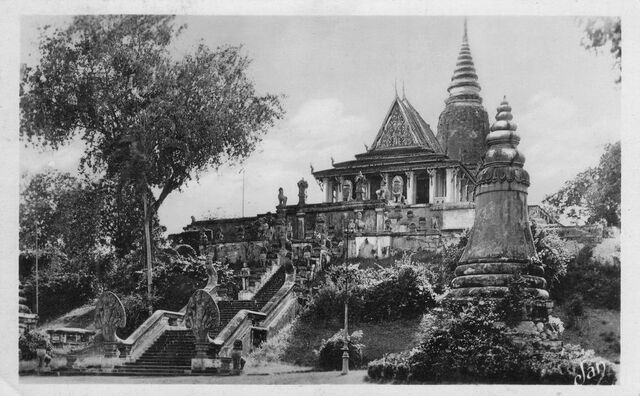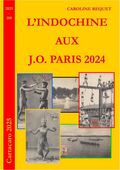The Calamine Mines of Tuyên-Quang, Echo of Mines and Metallurgy 1918
This calamine mine is located behind the Trang-Da mine, in the upper valley of the Crocodile torrent. Exploited first at the summit, at an altitude of 400 m., with a transporter cable descending to Trang-Da, the vein is now exploited further down. Six floors of galleries, not to mention open-air quarries, open up at various altitudes, between 180 and 300 meters; It was impossible to think of bringing the ore up to the summit which divides the valleys of the Crocodile and Trang-Da, in order to take advantage of the (…)
The most recent articles
The Yên Linh Mines (Crocodile Stream) Tuyen Quang, Louis Baud, Yen Linh Mines Yên Linh Mining Company in Tuyên Quang, a joint-stock company with a capital of 700,000 francs, was established in 1912.
(L’Avenir du Tonkin, November 6, 1912)
The zinc it extracts is estimated at 74 tons from 186 tons of calamine (40%)
Back of the cards
Green back
It is Louis Baud, a hotelier, who publishes these postcards. His hotel in Tuyên Quang provides accommodation and rest for the military of the Tuyên Quang district, as well as for the personnel of the region’s mines.Watanabe, the Japanese Photographer in Hanoi 1910-1915 Watanabe, the Japanese Photographer in Hanoi: A Historical Enigma
A Mysterious Figure Emerges
From 1910 onward, a Japanese photographer named Watanabe operated in Hanoi. His name appeared in the Annuaire général de l’Indochine until 1914, always listed with the initial H. before his surname. Yet, another Watanabe—this time with a first name starting with S.—was credited on studio portraits.
Was this the same individual? A relative? Or simply an error in the directory, which often reused outdated information, updating only addresses or business statuses?
A Studio on the Move In (…)Haïkus, Michael Kenna Born in 1953 in Widnes, an industrial town in northwest England, Michael Kenna grew up in a working-class Catholic family. After seven years at a minor seminary, hoping to become a priest, the young man discovered a passion for art. He chose to study photography at the Banbury School of Art and then at the London College of Printing, from which he graduated in 1976. He moved to the United States the following year and in San Francisco met photographer Ruth Bernhard, whose printer he would be for more than ten years. Michael Kenna’s first trip to Japan in 1987 was a turning point in his (…)
Poemamo A little poetry in this world ...., very disturbed at the moment. -
Don’t hesitate, it relaxes and feels good.-
https://poemamo.com
–Haikus, The return to the motif During his travels in Asia, Michael Kenna developed a fondness for certain places and patterns, to the point of rephotographing them periodically. The series thus created have become essential milestones in his work.
Composed of female nudes taken in Japan since 2008, the series Rafu is situated on the fringes of the artist’s usual work. Like his landscapes, however, it harnesses the interpretive power of photography to question the relationship between the body and space. The organic flexibility of the bodies is reflected in photographs of an oak tree in Japan on Hokkaido, taken from (…)Haikus, The Image Factory Although Michael Kenna now uses digital technology, preparing his compositions with a smartphone and sharing his work online, his photographs are all produced using traditional film techniques, which rely on the light sensitivity of silver halides. In silver halide photography, the shot produces a negative on film, which is then used as a matrix for printing on paper. The final work is only the visible part of a multitude of images produced at different stages (instant prints and digital shots in the field, contact sheets and test prints in the darkroom). The final print is also reproduced (…)
Suzannah, Articles, Postcards, and Photographs In search of Suzannah treasures!
Do you have any postcards, photos, or documents related to the Suzannah agricultural company, a pioneer in rubber tree plantations in Vietnam?
Share them with us!
Every image and every testimony counts in retracing this agricultural adventure. By sending us your archives, you are helping to preserve and share this page of history.
We will be sure to keep you informed, dear readers, of the discoveries you help us make.
Thank you in advance.
Postcards: unique photographic testimonials
The postcards we present here form a veritable visual report on (…)Rubber tree plantation in Suzannah Continuation of the Report by Mr GIRARD, Director of the Suzannah Company 1907-1908
Work from May 1907 to January 1908 (continued)
Preparation of the land
In parallel with the division of the plots, the land was carefully cleared to ensure optimal conditions for planting, both in terms of success and economy. The recommendations of Mr Vernet, agricultural engineer at the Institut Pasteur plantation, who advocates planting on perfectly clear land, confirmed our approach. During the board of directors’ visit, the condition of the plots dispelled any doubts about the effectiveness (…)Suzannah, Work completed in 1907-1908 Report by Mr Girard, Director of the Suzannah Company Work 1907–1908
Work completed up to May 1907 The initial clearing work was carried out using local methods: trees were felled at their base and burned on site, leaving the stumps in the ground. During this period, the foundations for the manager’s house and the sisters’ house were laid.
Work from May 1907 to January 1908 1. Division into lots and road construction Five-metre-wide roads were laid out to delimit regular plots of eighteen hectares (300 x 600 metres). This work, although essential, proved costly and difficult due to (…)
 INDOCHINA INDOCHINA
INDOCHINA INDOCHINA 


